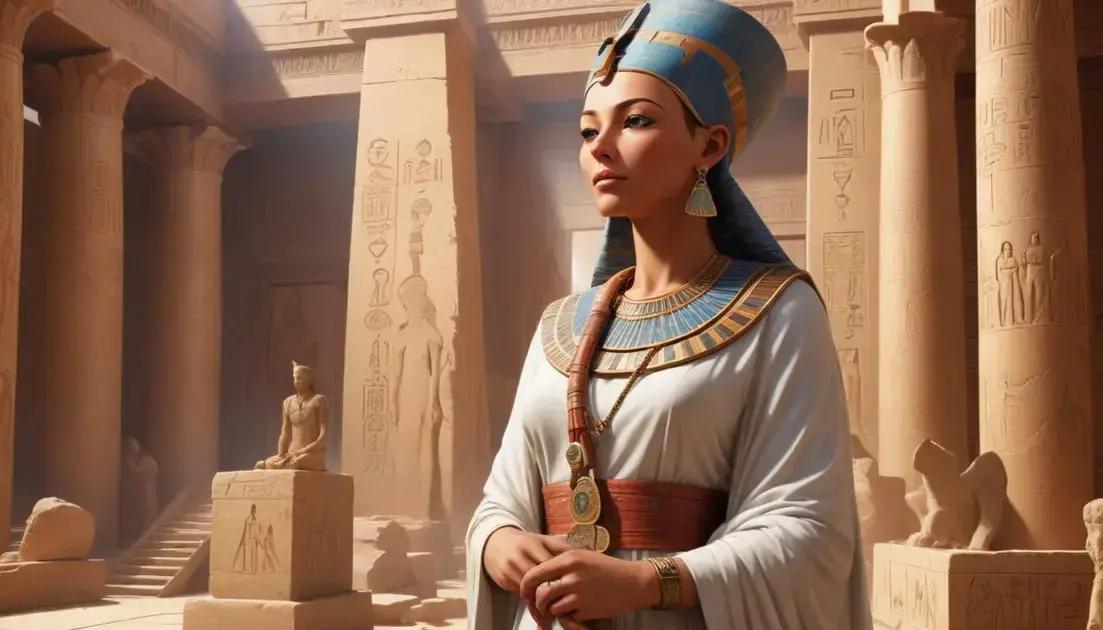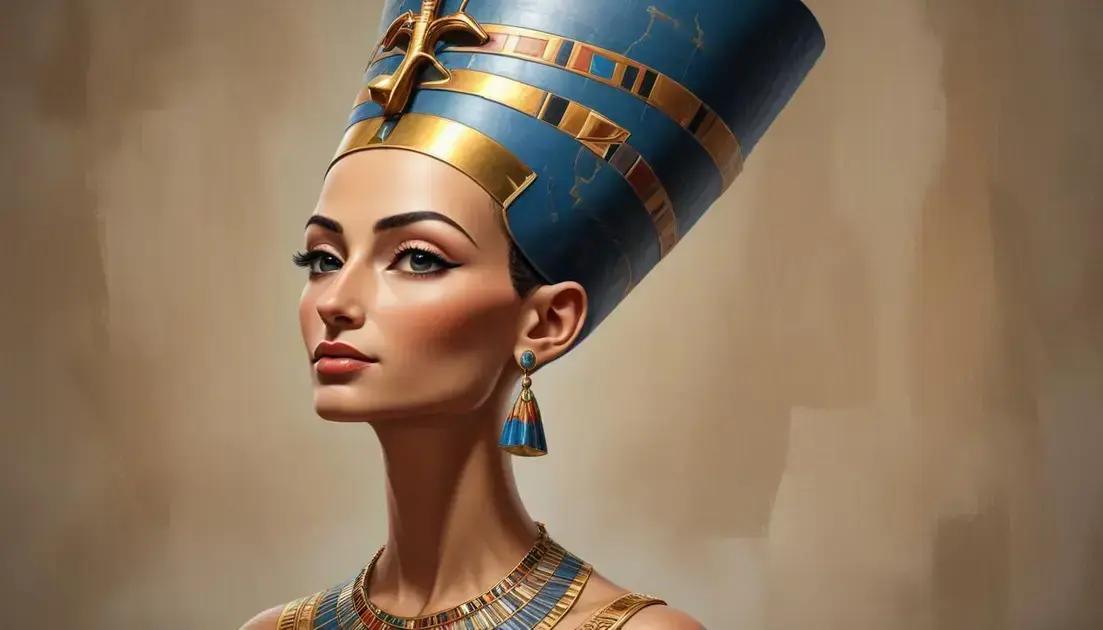
Hatshepsut: The Pharaoh Who Defied Male Tradition
Hatshepsut was a groundbreaking female Pharaoh of ancient Egypt who ruled during the 18th dynasty. She significantly influenced trade by establishing connections with distant lands, particularly through her famous expedition to the land of Punt. Hatshepsut’s reign is marked by impressive architectural achievements, including her renowned mortuary temple at Deir el-Bahari. Despite facing challenges and controversies due to her gender, her legacy endures today through her monuments and the story of her leadership. Hatshepsut’s life serves as a powerful example of resilience and the breaking of gender barriers in history.
Hatshepsut was not just any Pharaoh; she was a trailblazer in an era when women rarely wielded power. Her reign challenges our perception of ancient Egypt’s leadership.
The Life and Reign of Hatshepsut
Hatshepsut was a remarkable Pharaoh of ancient Egypt. She ruled during the 18th dynasty, around 1479 to 1458 BC. Her reign was unique as she was one of the few female rulers in a male-dominated society. Hatshepsut took power after her husband, Thutmose II, passed away. His son, Thutmose III, was too young to rule, so she stepped in to guide the kingdom.
During her time as Pharaoh, Hatshepsut focused on trade and building. She established trade routes that brought wealth to Egypt. Notably, she sent expeditions to the land of Punt, which provided precious goods like gold, ivory, and myrrh.
Hatshepsut also made her mark through impressive architecture. She commissioned beautiful temples and monuments. One of her most famous works is the mortuary temple at Deir el-Bahari. This temple is a testament to her reign and showcases her achievements.
Her leadership brought stability and prosperity to Egypt. Unlike many rulers, Hatshepsut maintained peace and focused on enhancing the economy. She showed that a strong woman could effectively lead and gain respect.
Even after her death, Hatshepsut’s legacy lived on. Many later rulers admired her strength and accomplishments. She proved that women could hold power and make significant contributions to history.
Hatshepsut’s Architectural Achievements
Hatshepsut was known for her stunning architectural achievements. She built many magnificent structures during her reign. One of her most famous projects is the mortuary temple at Deir el-Bahari. This temple stands as a tribute to her life and reign.
The design of the temple is unique and impressive. It features terraces, colonnades, and beautiful reliefs. These reliefs depict her life and achievements. They tell the story of her reign in vivid images. The temple is also set against the backdrop of cliffs, making it visually striking.
Another notable project was the construction of her shrine at Karnak. This shrine was dedicated to the god Amun. Hatshepsut expanded the temple complex at Karnak significantly. She added her own inscriptions and monuments, which celebrated her legacy.
Hatshepsut’s architectural style combined traditional Egyptian designs with her personal flair. She promoted the use of large stone blocks and detailed carvings. Her buildings were not just functional; they were beautiful and symbolic.
These architectural achievements showed her power and vision. Hatshepsut wanted to be remembered, and she certainly succeeded. Even today, her structures are admired by all who visit Egypt.
The Influence of Hatshepsut on Trade
Hatshepsut had a significant impact on trade during her reign. She understood that trade was vital for Egypt’s wealth and stability. Hatshepsut increased trade routes, connecting Egypt to distant lands.
One of her most famous trading expeditions was to the land of Punt. This land, often thought to be in modern-day Somalia, was rich in valuable goods. Hatshepsut sent ships there to collect spices, gold, and exotic animals. These treasures brought great wealth to Egypt.
Hatshepsut also promoted trade with neighboring regions. She established strong connections with places like Lebanon and Nubia. This helped secure essential resources, like timber and precious stones, for building projects.
Her trade policies brought prosperity to Egypt. The increase in trade meant more jobs and better living conditions for many people. Hatshepsut’s reign was marked by economic growth and cultural exchange.
The goods that flowed into Egypt during her rule were impressive. People gained access to new items from different cultures. This not only enriched Egyptian society but also helped spread Egyptian influence.
Controversies and Challenges Faced
Hatshepsut faced several controversies during her reign. As a female Pharaoh, she challenged the norms of a male-dominated society. Some people questioned her authority and legitimacy. They thought a woman should not lead Egypt.
To solidify her power, Hatshepsut often presented herself as a man. She wore masculine clothing and even a false beard in statues. This created conflict among some Egyptian elites who felt threatened by her rule.
Additionally, after her death, her memory was attacked. Some of her successor’s supporters tried to erase her from history. They defaced her monuments and removed her name from inscriptions. This was an effort to promote Thutmose III as the sole ruler.
Despite these challenges, Hatshepsut’s legacy endured. Many ancient records and artifacts still tell her story today. Her impressive architectural achievements and successful trade expeditions show her impact.
The controversies surrounding her reign highlight the difficulties she faced as a woman in power. These challenges did not stop her from leaving a lasting mark on history.
The Legacy of Hatshepsut
Hatshepsut’s legacy is remarkable and far-reaching. She broke barriers as one of the first female Pharaohs. Her reign proved that women could lead and succeed in ancient Egypt.
Many of her incredible achievements remain today. The mortuary temple at Deir el-Bahari still impresses visitors. This architectural wonder showcases her creativity and vision. It’s a symbol of her successful rule.
Hatshepsut’s trade expeditions brought wealth to Egypt. These efforts opened economic doors and expanded connections with other lands. Her influence on trade helped strengthen the Egyptian economy long after her reign.
Despite attempts to erase her name, Hatshepsut’s story has survived. Archaeologists continue to discover evidence of her life and reign. Inscriptions and artifacts tell her tale to new generations.
Today, Hatshepsut stands as an iconic figure in history. She is celebrated for her achievements and strength. Her legacy inspires many, showing that leadership knows no gender.
Conclusion
In conclusion, Hatshepsut’s reign marked a significant chapter in ancient Egyptian history. She broke barriers as a female Pharaoh and showed that women could excel in leadership. Her impressive architectural achievements and successful trade expeditions enriched Egypt.
Despite facing challenges and controversies, Hatshepsut’s legacy remains strong. Many of her monuments and stories still inspire people today. Her determination and vision set a powerful example for future generations. Hatshepsut is not just remembered as a ruler but as a symbol of strength and resilience.
Ultimately, Hatshepsut’s life teaches us important lessons about leadership and breaking stereotypes. Her journey reminds us that anyone, regardless of gender, can leave a lasting mark on history. The impact of her reign continues to shape our understanding of power and influence in ancient civilizations.


